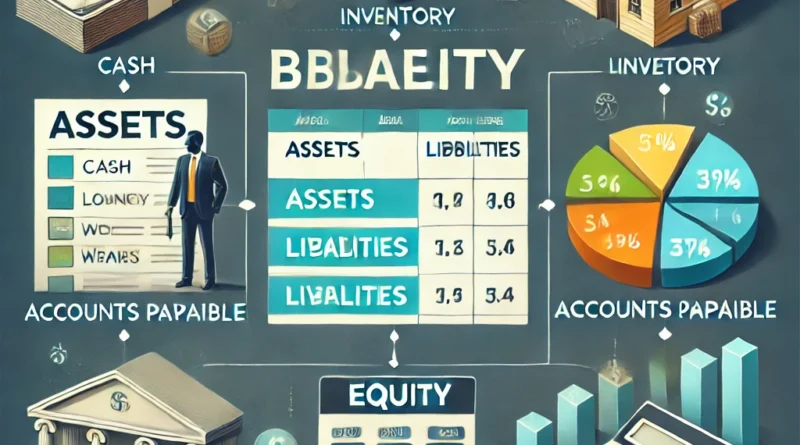Accounting for Assets and Liabilities: Building a Strong Financial Foundation for Your Startup
Managing assets and liabilities is fundamental to the financial health of any startup. These two key elements form the backbone of your balance sheet and provide insight into your company’s financial stability. Understanding how to properly account for assets and liabilities ensures that your startup can operate smoothly, invest wisely, and meet financial obligations.
What Are Assets?
Assets are resources owned by your business that provide future economic benefits. They are classified into different categories based on their liquidity (how easily they can be converted into cash) and their purpose within the business.
Types of Assets:
1. Current Assets: These include resources that are expected to be converted into cash or used up within a year. Examples include:
Cash
Accounts receivable (money owed to your business)
Inventory
Prepaid expenses (e.g., insurance or rent paid in advance)
2. Non-Current Assets: These are long-term investments or resources that will benefit the company for more than a year. Examples include:
Property, plant, and equipment (PPE)
Intangible assets (such as patents or trademarks)
Long-term investments (e.g., stocks or bonds)
For startups, current assets are particularly important, as they represent the cash and resources needed to cover short-term expenses. Non-current assets, on the other hand, are essential for long-term growth and stability.
What Are Liabilities?
Liabilities represent what your business owes to others. They are financial obligations that the company must settle, either in the short or long term.
Types of Liabilities:
1. Current Liabilities: These are obligations that must be settled within one year. Examples include:
Accounts payable (money you owe to suppliers)
Short-term loans or credit lines
Accrued expenses (such as unpaid wages or taxes)
2. Non-Current Liabilities: These are long-term financial obligations that are due beyond one year. Examples include:
Long-term loans or bonds
Deferred tax liabilities
Lease obligations
Managing liabilities effectively is crucial for maintaining liquidity and ensuring that your business can meet its financial obligations without incurring too much debt.
How Assets and Liabilities Work Together
The relationship between assets and liabilities is fundamental to understanding your business’s financial position. By comparing your assets to your liabilities, you can assess your startup’s net worth or equity, which is the difference between what your business owns and what it owes.
Assets – Liabilities = Equity
This equation forms the basis of your balance sheet and provides insight into the financial health of your startup. Positive equity means your assets exceed your liabilities, indicating financial stability. Negative equity, on the other hand, suggests your liabilities outweigh your assets, which could signal financial distress.
Asset and Liability Management for Startups
Startups often face challenges in managing their assets and liabilities, especially in the early stages when cash flow may be limited, and expenses are high. Here are a few tips for effectively managing assets and liabilities:
1. Prioritize Liquidity: Ensure that you maintain enough current assets, such as cash and accounts receivable, to cover your short-term liabilities. This ensures your business can operate smoothly without facing cash flow shortages.
2. Invest in Non-Current Assets Wisely: While non-current assets are important for long-term growth, avoid over-investing too early. Focus on assets that will directly contribute to your business’s scalability and efficiency.
3. Manage Debt Carefully: Keep a close eye on your liabilities, especially long-term debt. While some debt can be useful for growth, too much can strain your cash flow and make it difficult to manage day-to-day operations.
4. Regularly Review Your Balance Sheet: Keep a close eye on your assets and liabilities through regular financial reviews. This will help you spot any potential issues before they become larger problems, ensuring that your business remains financially healthy.
Final Thoughts
For startups, managing assets and liabilities is key to building a strong financial foundation. By understanding how to categorize and track these elements, you’ll be better equipped to make informed decisions about growth, investments, and managing debt. As your business grows, regular financial reviews will ensure you stay on track and can meet your financial obligations while investing in future success.
#AssetManagement #LiabilityManagement #StartupFinance #BusinessAccounting #BalanceSheet #FinancialHealth #ProBizInsights #SmallBusinessFinance #DebtManagement #BusinessGrowth




